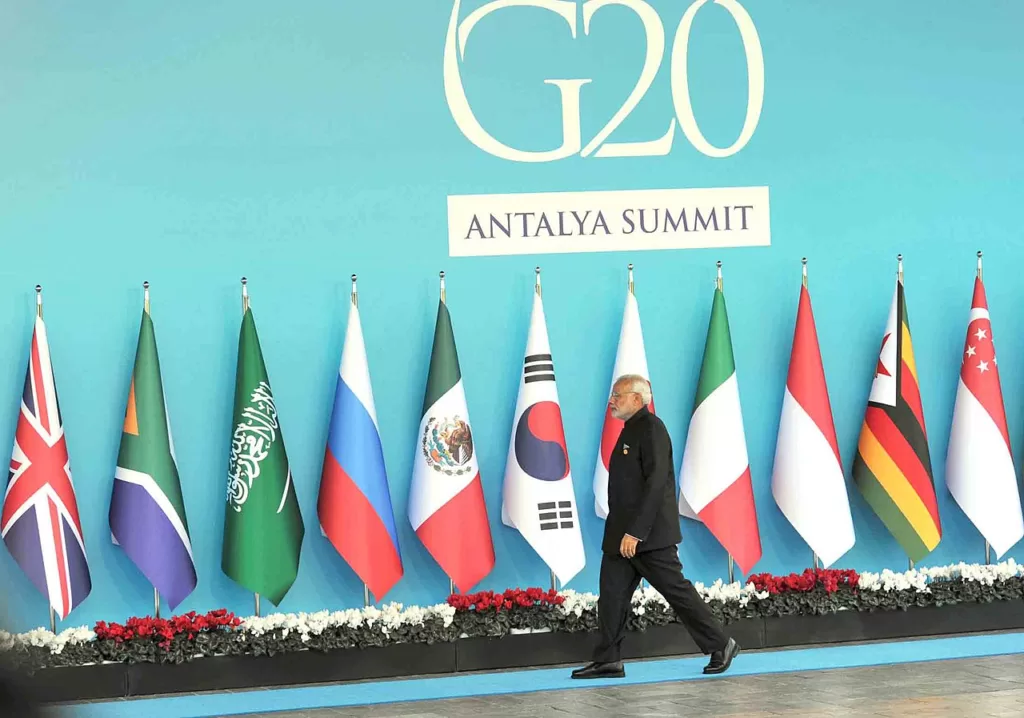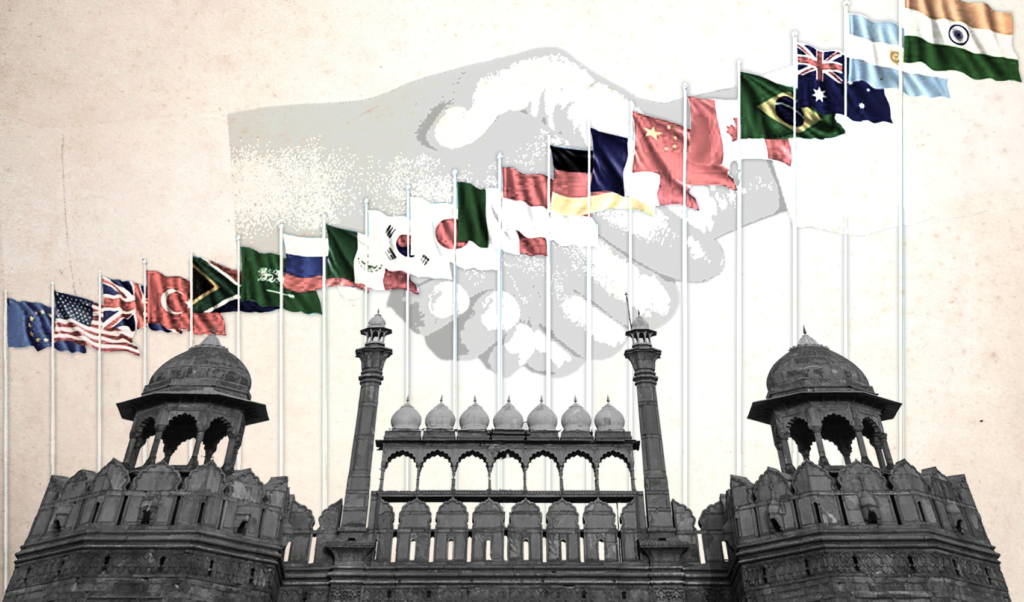The Indian Prime Minister says a G20 strategy has driven global debt restructuring since his country assumed leadership. That's not the full picture.
 Indian Prime Minister Narendra Modi is hosting world leaders in New Delhi. : Prime Minister’s Office, Wikimedia Commons Open data (https://commons.wikimedia.org/wiki/File:The_Prime_Minister,_Shri_Narendra_Modi_at_the_G20_Summit_2015,_in_Turkey_on_November_15,_2015.jpg)
Indian Prime Minister Narendra Modi is hosting world leaders in New Delhi. : Prime Minister’s Office, Wikimedia Commons Open data (https://commons.wikimedia.org/wiki/File:The_Prime_Minister,_Shri_Narendra_Modi_at_the_G20_Summit_2015,_in_Turkey_on_November_15,_2015.jpg)
The Indian Prime Minister says a G20 strategy has driven global debt restructuring since his country assumed leadership. That’s not the full picture.
Indian Prime Minister Narendra Modi, who is about to host G20 leaders in New Delhi, has boasted about his country’s role in easing global debt stress.
“In 2023, under India’s presidency, the G20 gave a significant boost to debt restructuring through the Common Framework,” Modi said.
But despite Modi’s boast, the Common Framework is flawed and needs drastic reform. Without that reform, the growth of many developing countries will be hindered.
The framework is a successor to the G20’s pandemic debt suspension initiatives and established a permanent mechanism to help low-income countries dealing with unsustainable debt.
Modi points to three countries — Zambia, Ethiopia and Ghana — he says have made “notable advancements” on debt restructuring using the framework since India assumed leadership of the G20 in 2023.
But the framework has only helped those few countries and only to a degree. It has only kept them solvent, doing just enough to let debt-ridden countries meet basic obligations without providing meaningful relief from arrears.
It also excludes the increasing proportion of debt owed to private creditors and multilateral agencies. And it does not deal with the growing challenge of middle-income countries also facing spiralling debt.
There are 69 low-income countries that need immediate restructuring of their debts. Unsustainable debt can prompt a default on repayments and can contribute to further declines in economic growth, a drop in investment, increased inflation and a devaluation of currency.
Debt restructuring can provide countries breathing space so their economies can recover.
When India assumed the presidency of the G20, Modi spoke ambitiously of helping low-income countries clear debt challenges. There seemed to be momentum to address the framework’s inherent design flaws and promise for a road map to ensure sustainable results.
But, under India’s leadership, little has been done to reduce the debt burden on low and middle-income countries. Three meetings with G20 Finance Ministers and Central Bank Governors have only delivered vague reiterations that they “stand by all the commitments made in the Common Framework for Debt Treatments”.
But reform would be significant as the pandemic’s effects continue to be felt.
Low-income countries are suffering from increasing debt, hindering their ability to invest and comfortably meet their repayment obligations.
Between 2018 and 2021, total debt service payments of low-income countries had risen from USD$10.6 billion to USD$18 billion — a 71 percent increase.
As a result, the ratio of total debt service payments to exports of goods, services and primary income grew from 11.5 percent to nearly 17 percent.
Meanwhile, the ratio of debt service payments to gross national income nearly doubled.
Several middle-income countries, notably Sri Lanka and Pakistan, have also been caught in debt traps: cycles of borrowing money to meet existing debt obligations.
Is the framework set up to achieve its goals?
The G20’s pandemic initiative intended to temporarily suspend debt service payments for 73 countries, but only to bilateral creditors — countries which directly lent to another country.
Debt obligations to multilateral agencies — organisations or institutions that pool funds from several countries — and private creditors were excluded.
By the end of 2019, bilateral creditors accounted for 25 percent of the outstanding external debt stocks of developing economies. By 2021, it had dropped to 21 percent.
However, debt owed by low income countries to private creditors had increased, from below 14 percent in 2010 to more than 32 percent a decade later.
Low-income countries owed private-sector creditors about USD$14 billion in 2010, increasing to more than USD$83 billion over the next decade.
The G20’s framework aims to benefit low-income countries, ignoring the debt burden of middle-income countries.
Even if they fell within the framework’s remit, which mostly addresses debt payments owed to other countries, it would do little to reduce the strain.
For instance, Pakistan’s bilateral official donors accounted for 30.5 percent of its total outstanding external debt. In Sri Lanka, the corresponding figure was 20.3 percent. The rest of its debt comes from the private sector or multilateral donors.
Since the framework launched, only four countries have asked to restructure their debts: Chad, Ethiopia, Zambia and Ghana.
Chad was the first in January 2021. It took until December 2022 to reach a deal with its major creditor.
The agreement was criticised by then-World Bank president David Malpass, who argued it would not result in actual debt reduction.
Zambia only reached an agreement with official creditors to reduce its debt burden in July 2023, while Ethiopia’s creditor committee has struggled for more than two years to find a solution. Ghana’s creditor committee was formed in July 2023.
With limited success, the G20’s debt-reduction initiative risks fading into irrelevance — like many reduction attempts since the debt crisis in the 1980s.
From the experiences of the four countries that have tried to engage with the G20 framework, it seems clear it is not designed to relieve debtors but simply ensure they can service their debts.
Basic changes to the structure of the framework were not mentioned, even though that would help deliver on Modi’s promise to address the “threat of unsustainable debt facing some developing nations”.
Biswajit Dhar is a former professor of economics, Jawaharlal Nehru University. He is Distinguished Professor at Council for Social Development, New Delhi.
Originally published under Creative Commons by 360info™.










